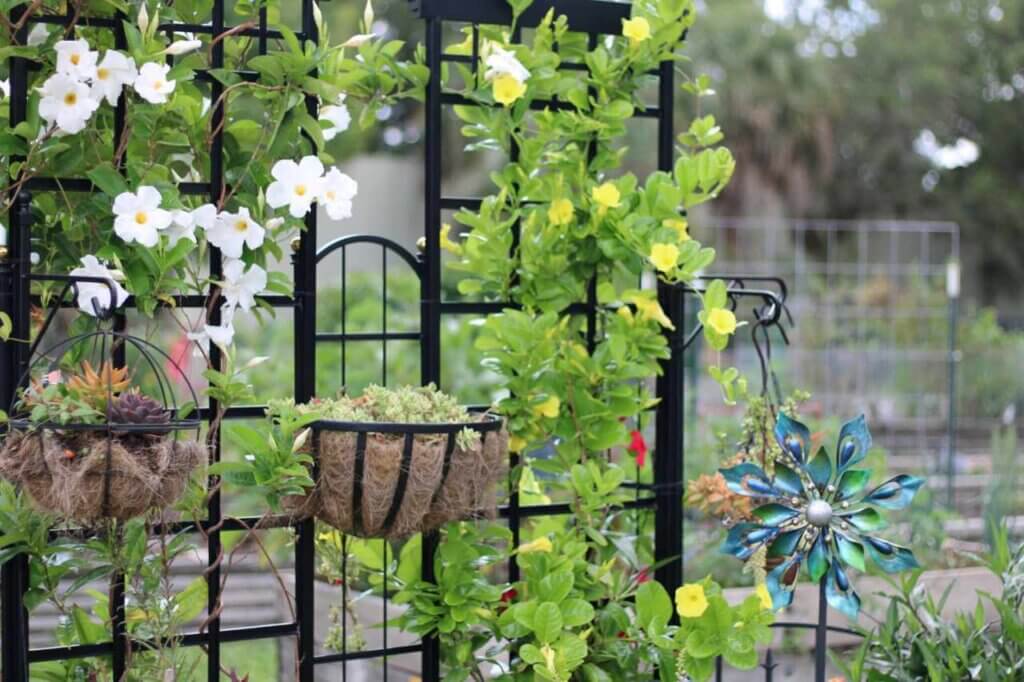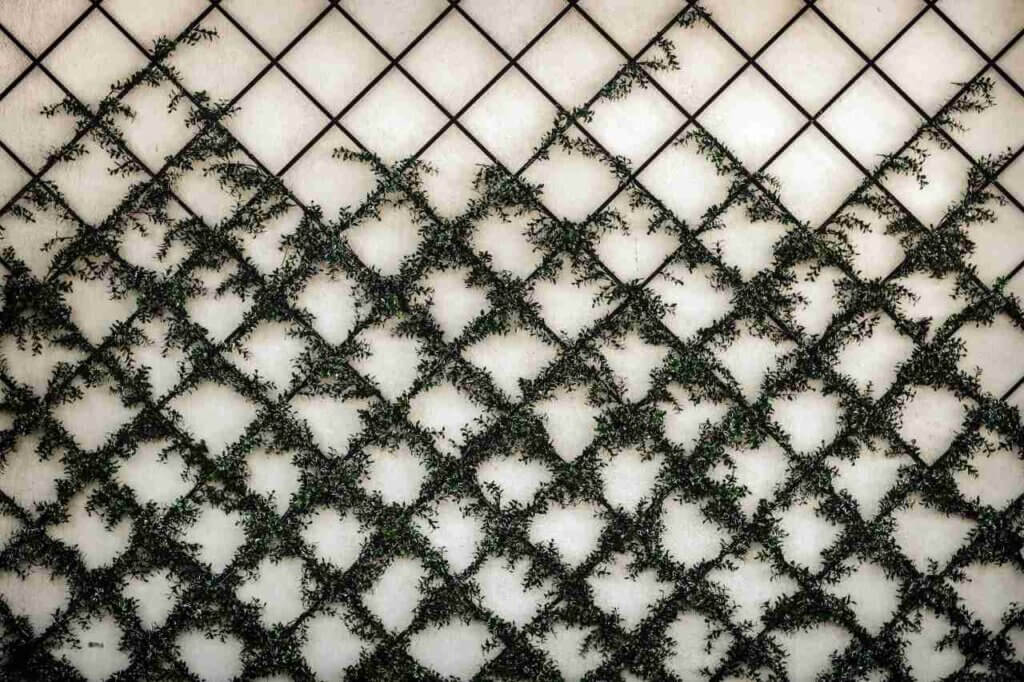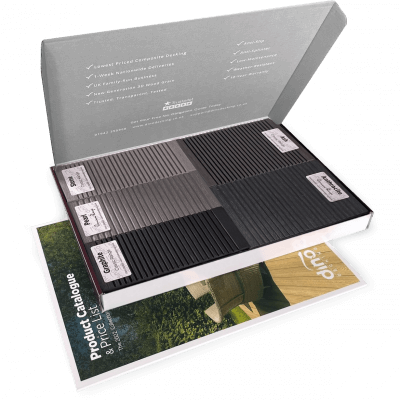5 Composite Decking Lighting Ideas
Our composite decking looks great in any setting, but you can really make your outdoor spaces shine with our decking
Products in Stock
Lowest Prices
Express Delivery
10-Year Warranty
Early April Sale. Up To 15% Off.

If you’re looking to add some vertical interest to your garden or create a support structure for climbing plants, a trellis might be just what you need. But what kind is best for your needs? After all, trellises come in a variety of materials and styles, each with its own set of benefits and considerations.
Without further ado, let’s explore the different types of trellises available and help you find the perfect one for your outdoor space.
A trellis is essentially a framework used to support climbing plants. But it’s not just about function – a good trellis can be a real feature in your garden, adding structure and visual interest.
You can learn more about trellises by clicking through the link to our blog, where we’ve covered the subject in-depth.
The best thing about trellises? They’re pretty much garden multi-taskers. They can help you make the most of vertical space (which is perfect for small gardens), create privacy, and even act as a decorative feature in their own right. Plus, they give your climbing plants something to cling to, which means healthier, happier plants.
So, what different types of trellises can you get your hands on? Let’s take a look.
When it comes to durability and low maintenance, composite trellises are hard to beat:
Composite trellises, made from a mixture of wood fibres and recycled plastic, offer the best of both worlds: the natural look of wood combined with the durability and low maintenance of synthetic materials. These trellises are resistant to rot, insects, and weather damage, making them an excellent long-term investment for your garden.
You can even add screens for privacy; our top quality composite garden screens aren’t just resistant to rot, insects, and weather damage, but they also come in a range of styles and colours, so you can find one that’s perfectly in-keeping with your garden’s aesthetic.
Wood trellises remain a popular choice due to their natural appearance and versatility, but they’re not without their drawbacks:

When it comes to advantages, wooden trellises offer a classic, timeless look that complements most garden styles, and they can also be easily painted or stained to match your outdoor decor. However, it’s worth noting that wood trellises generally require more maintenance than their composite counterparts; regular treatment is necessary to protect them from the elements, and they may need replacing sooner than more durable materials.
For those seeking a more contemporary or industrial look, metal trellises can be an excellent option:
Metal trellises are known for their strength and durability, making them ideal for supporting heavier climbing plants. And you don’t need to abandon style for substance – wrought iron trellises in particular can add a touch of elegance to any garden setting. However, it’s important to consider that metal trellises can rust over time if not properly maintained, and they may heat up in direct sunlight, which could potentially damage delicate plants.
If low maintenance is your top priority, vinyl trellises might be the solution you’re looking for:
Vinyl trellises are incredibly durable and require minimal upkeep; like composite material, they resist rot, rust, and fading, and cleaning them is as simple as hosing them down.
On the downside, some gardeners find that vinyl trellises can look somewhat artificial compared to wood or metal options, and they’re not exactly as environmentally friendly as other materials.
When selecting a trellis for your garden, here are a few important factors to consider:
Different plants have varying support needs; some are light and delicate, requiring only minimal support, while others are heavy and vigorous, needing a sturdy structure to climb on. It’s essential to choose a trellis that can adequately support the types of plants you intend to grow.
It’s also worth considering how much time and effort you’re willing to invest in maintaining your trellis. If you prefer a low-maintenance option, composite or vinyl trellises might be more suitable, while if you enjoy garden projects and don’t mind regular upkeep, a wooden trellis could be rewarding.
Finally, remember that your trellis should complement your overall garden design. A rustic wooden trellis might look out of place in a modern, minimalist garden, while a sleek metal trellis might not suit a cottage-style garden. Unless you’re looking to create a more eclectic design – and hey, who are we to judge? – you’ll want to consider the existing elements in your outdoor space and choose a trellis that enhances your garden’s aesthetic.
Ultimately, whether you opt for the durability and low maintenance of composite, the classic appeal of wood, or the convenience of vinyl, the right trellis can truly transform your garden. And if you’re looking to invest in eco-friendly materials, reach out to us today for a discussion, or order your free samples of our composite trellises over here on our website.

Our sample pack contains a sample piece of each colour currently available. Order your free sample pack today to compare the colours and get a true feeling of the Dino Decking range!
Our composite decking looks great in any setting, but you can really make your outdoor spaces shine with our decking
If the idea of having rats under your decking makes you shiver, don’t worry. We’ll let you know the signs
Business hours
Monday: 09:00 – 17:30
Tuesday: 09:00 – 17:30
Wednesday: 09:00 – 17:30
Thursday: 09:00 – 17:30
Friday: 09:00 – 17:30
Saturday: Closed
Sunday: Closed
Contact us
01942 355968
support@dino.co.uk
Collection Address: Unit 1 Wetheral Close Hindley Ind Estate Wigan Greater Manchester North West WN2 4HS
Pages
Products
Testing
Copyright 2025 Dino Decking Ltd All Rights Reserved.
VAT Number: GB296097848.
Company Number: 10837233.